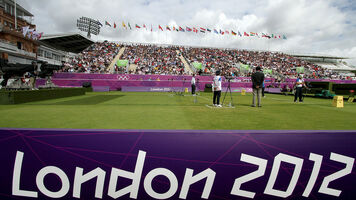A brief history of the competition formats used in international archery 1931-2020
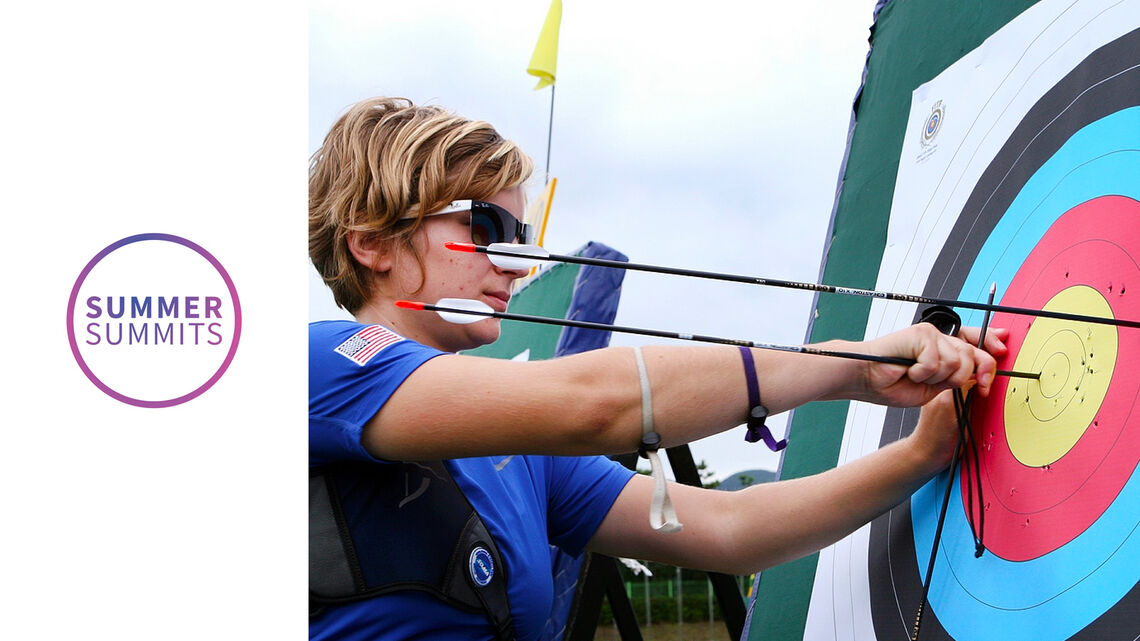
World Archery was founded as FITA in 1931 in Lviv, then part of Poland and called Lwow, with the express mission of standardising international rules for the sport and getting archery back on the Olympic programme.
It had appeared four times previously in 1900, 1904, 1908 and 1920. Each edition had used rules created by the host country – and there was little consistency.
FITA took 41 years developing archery, and the competition format, before the sport returned to the Olympic programme at the Games held in Munich in 1972. Over that time, and ever since, the international rules have been constantly refined.
The history of the round used at international competition is easily broken down into five periods.
The first is one of murky clarity and experimentation between different historical styles, the second and third are stable and based around the international and then 1440 rounds, the four was short and focused on the Grand FITA and the last, and current period, is with head-to-head matchplay.
1931-1935 – Experimental era
The foundation of the international federation didn’t bring about immediate standardisation but the same competition format was used for the World Archery Championships held in 1931 and 1932.
Archers shot 36 arrows at 50 metres on a face measuring 120 centimetres in diameter, then 24 arrows at 50 metres and 12 arrows at 30 metres on faces measuring 80 centimetres in diameter.
In 1931, there was a mixture between 10-zone and five-zone scoring while in 1932 it was solely the latter, with the rings on the targets scoring 9, 7, 5, 3 and 1 points.
The format at the championships in London in 1933 saw a differentiation between men and women.
Men shot 84 arrows at 90 metres then 48 arrows at 30 metres on the first day, 60 arrows at 50 metres and 72 arrows at 70 metres on the second. The women’s first day had 96 arrows at 70 metres and 24 arrows at 30 metres, followed by 120 arrows at 50 metres on day two.
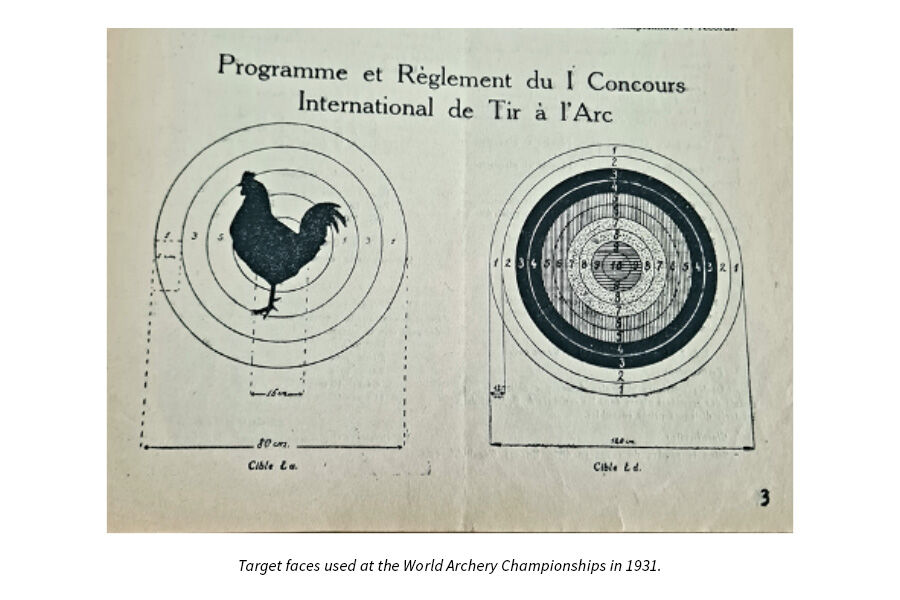
Targets used the English style of scoring – 9, 7, 5, 3 and 1 points – and the target size at all distances except 30 metres, where it was 80 centimetres, was 48 inches.
In metric measurement that’s about 122 centimetres – and where the standard target size still used today comes from.
One year later, in 1934, four distances were introduced for the men, who shot 72 arrows at 90, 70, 50 and 30 metres (what would later be the distances for the 1440 Round); women shot 70, 50 and 30 metres. The 80-centimetre face was retained for 30 metres and 122-centimetre face for everything longer.
In 1935, an early elimination format was used. After four days of shooting, the top 10 men and women shot 60 arrows at 50 metres on a 122-centimetre face scoring 10 to 1 points.
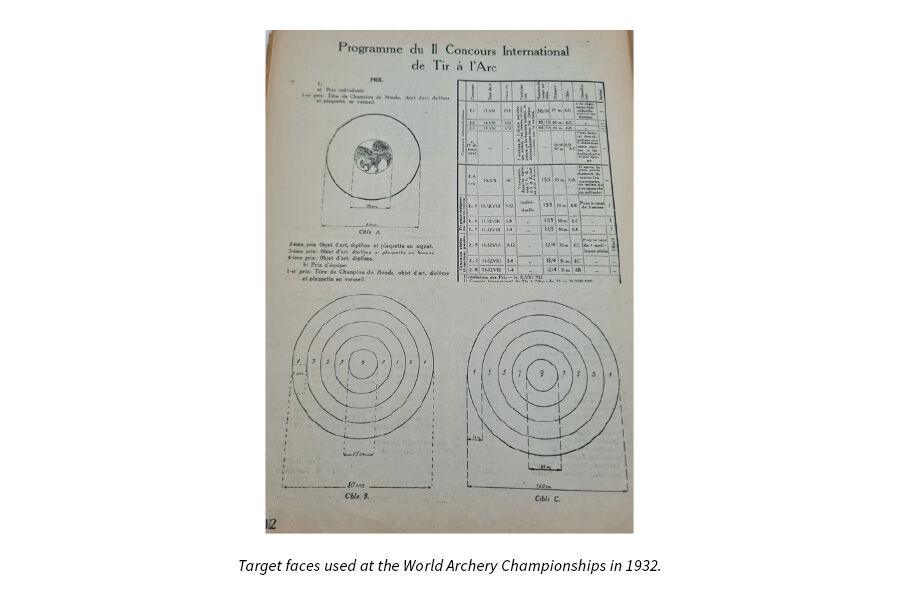
1936-1955 – International rounds
At congress in 1935, a compromise was made to balance between long and short distances. Long rounds were standardised for both men and women alongside a universal short round. These worked as follows.
- Ladies’ long round: 120 (2x60) arrows at 70 metres, 96 (2x48) arrows at 60 metres and 72 (2x36) arrows at 50 metres using a 122-centimetre target face and English scoring.
- Men’s long round: 144 (2x72) arrows at 90 metres, 96 (2x48) arrows at 70 metres, 48 (2x24) arrows at 50 metres using a 122-centimetre target face and English scoring.
- Short round: 60 (2x30) arrows at 50 metres using a 122-centimetre target face and 10-ring scoring, followed by 60 (2x30) arrows at 35 metres and 60 (2x30) arrows at 25 metres on a 45-centimetre target with rings scoring 6 to 1 points.
Several small changes were made during this period.
In 1937, the 35-metre short round face was changed to an 80-centimetre target with 10-ring scoring. Then, at congress in 1946, the 45-centimetre target was swapped for one measuring 60 centimetres.
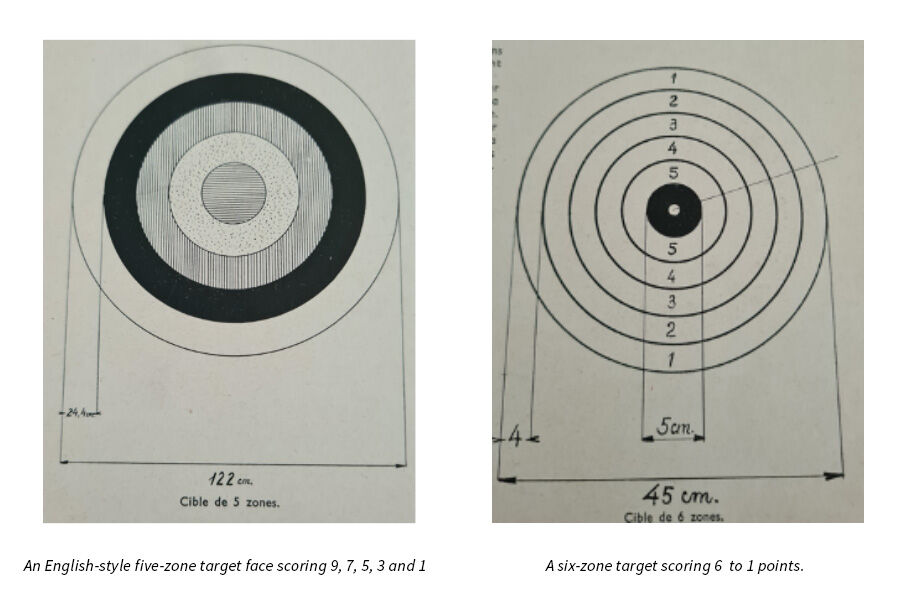
1956-1986 – 1440 Round
World Archery Congress in 1955 adopted the 1440 Round as the standard for world championships. It ended the tug-of-war between long and short distances, different styles and sizes of target faces and the varying number of arrows.
Men shot 36 arrows each at 90, 70, 50 and 30 metres. Women shot 36 arrows each at 70, 60, 50 and 30 metres.
The two longer distances were shot at 122-centimetre targets faces and the two shorter distances were shot at 80-centimetre target distances. All targets had 10-ring scoring but used the colours – gold, red, blue, black and white – from the English-style target.
The maximum score for men and women was 1440.
These would be the standardised rules that would take archery back to the Olympic Games.
1987-1991 – Grand FITA Round
While only lasting for three championships – 1987, 1989 and 1991 – and the Seoul 1988 Olympic Games, the Grand FITA was archery’s first real foray into an elimination-style of competition.
It built on the existing 1440 Round.
After the first 144 arrows, the top 24 men and women shot their four distances again but this time only nine arrows (rather than 36) each time. Another six archers were then eliminated and the remaining 18 shot nine arrows at each distance again. This process was repeated with a cut to 12 and then a cut to eight archers for the final.
There was also a team round, based on the same concept, with 12 teams entering the first elimination phase and a cut to eight for the final.
1992-present – Matchplay and the modern-day
The Olympic Games had matchplay before the world championships.
Archers at Barcelona 1992 used an eliminations bracket but it wasn’t until Antalya in 1993 that it was implemented at the World Archery Championships. (Those worlds were also the first to be won by a Korean man – Park Kyung Mo.)
The 1440 Round was still used as qualification right up until 2013 when it was replaced by the 72 arrows at 70 metres (recurve) or 50 metres (compound) implemented at the Olympic Games since 1996.
In 1993, only the top 32 archers after qualification advanced to the bracket where they shot 12-arrow matches at 70 metres.
In 1995, the number of archers entering the bracket increased to 64. It went up to 128 in 2007 and the top-eight bye (for championships and other non-Olympic events) was later introduced at the worlds in 2011.
The number of arrows shot in the early elimination rounds increased from 12 to 18 in 1995, too, while compound made its debut using largely the same rules as the recurve competition. For the first two championships, in 1995 and 1997, an inner 10-ring was used to differentiate between the two styles but this was removed by Riom in 1999.
The matchplay principle has been further refined over the past decade.
The set system was introduced for individual recurve competition in 2009 and team recurve competition in 2013. Compound experimented with the hit-miss system in 2010 but, since 2013, settled on 15-arrow cumulative scoring at 50 metres.
Changes in the rules for international competition have come consistently over the history of World Archery.
Twenty-eight years into the matchplay era, the sport is nearing its longest period of relative rule stability. Archery has been longer on the Olympic period since World Archery was founded (48 years) than it was off it (42 years).
But it’s almost certain that, given the history and potential of the sport, this journey is not quite over.
Thanks to Tom Dielen for investigating the archives, Sergio Font and everyone else who contributed to the history.





